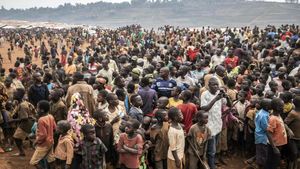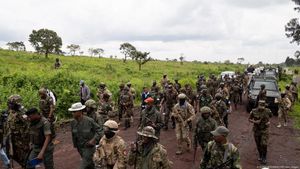North Korean troops have reportedly vanished from the frontline near Kursk, marking a significant shift amid the intense conflict involving Russia and Ukraine. According to Ukrainian military officers and American intelligence, these forces have not been seen fighting for the past three weeks. This absence follows reports of massive casualties among the North Korean soldiers, with some estimates indicating nearly half of their deployed contingent is either dead or wounded.
Since November 2023, North Korea bolstered Russian positions with approximately 11,000 military personnel, primarily stationed around Kursk to support Russian forces against the Ukrainian advance, which began last August. The Kyiv Independent and The New York Times both cited officials reaffirming the withdrawal was likely temporary, fueled by the necessity for rest and regrouping.
Reports emerged earlier this month citing Oleksandr Syrsky, the commander of Ukraine's armed forces, who indicated the staggering losses experienced by the North Korean troops. The casualties have been attributed to outdated military tactics and inadequate responses to modern warfare elements, like drone strikes. Notably, two North Korean soldiers were captured, with most refusing surrender, showcasing the high-risk strategies employed by their units.
The exodus has fueled speculation about North Korea's broader military capabilities and future intentions. While officials from both the U.S. and Ukraine have noted the current retreat, they caution it does not imply abandonment of the conflict by North Korea. Analysts expect new military reinforcements, possibly including additional artillery units, to be dispatched, reinforcing North Korea’s capacity for prolonged engagement.
Recent military insights indicate the strategic significance of the Ukrainian city of Pokrovsk, which serves as a major logistical hub. With the Russian forces tightening their grip around this location, the absence of North Korean support presents another hurdle for Moscow's operational goals. Defense specialists believe this capture is pivotal for the Ukrainian supply chains, and the eventual loss could result in significant resource constrictions.
Despite the challenges posed by Ukrainian counteractions, which have included drone warfare, Russian forces continue their push near strategic points. Despite claims from the Kremlin about their control of Pokrovsk, defense experts argue the battle for the city is far from settled. This marks yet another indicator of distress following the withdrawal of North Korean troops from the battlefield.
Dissecting the underlying reasons for the North Korean pullback, Pentagon officials theorize it may be due to the Russian high command reconsidering its deployment strategy after experiencing operational setbacks. The anticipated return of these troops to bolster Russian ground forces reflects not only on the military dynamics at play but also on the historical patterns seen with North Korea’s military doctrine. Over reliance on massive troop deployments with less emphasis on technological advancements has historically been their Achilles' heel.
During this tumultuous period, it remains imperative to analyze the geopolitical climate, especially with North Korea's increasing assertiveness on the global stage. The lessons derived from their involvement alongside Russian troops may influence future North Korean military strategies, potentially leading to adaptations or reinforcements as they strive to solidify their presence and secure their national interests.
The withdrawal of North Korean forces could led to changes within the battlefield framework of this conflict, but whether this shift will escalate or stabilize Russian operations remains to be seen. Histories of previous military engagements point to the possibility of North Korea ramping up troop activities, driven by internal and external pressures, including being near their ally Russia.
Incensed by the recent dropouts from the field, both Russian and North Korean military tactics will likely be reassessed. Leadership within the North Korean military might instigate changes ranging from troop deployment tactics to broader operational methods, attempting to mitigate the heavy losses previously suffered. Defense experts view the operational halt as more than just strategic maneuvering; it is also reflective of the existing limitations within North Korea's military preparedness against modern warfare challenges.
Despite global geopolitical turmoil affecting international perceptions, North Korea's military will continue to capitalize on its artillery capabilities. Their extensive armament stockpiles by the border with South Korea remains unyielding and presents significant concerns for potential escalations. South Korea remains vigilant, especially as the repercussions of North Korean troop movements could signal more severe confrontations.
Experts and military analysts will be continually monitoring this situation for the subsequent developments. While Ukrainian officials have verified the Northern retreat, both sides remain acutely aware of the precarious balance of power at play on the battlefield. Amidst all uncertainties, one fact stands clear; the conflict is poised to remain dynamic and volatile as alliances shift and military strategies adapt.



